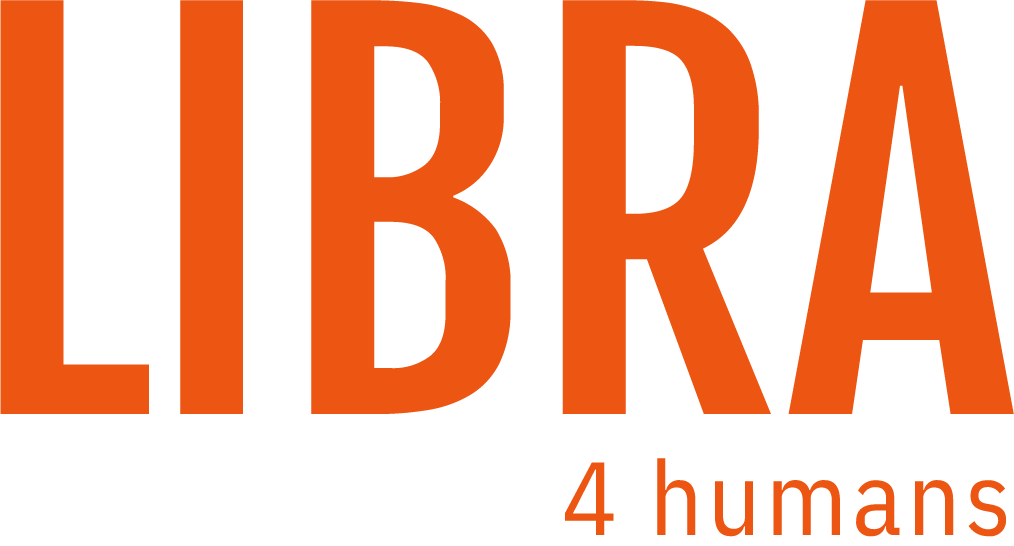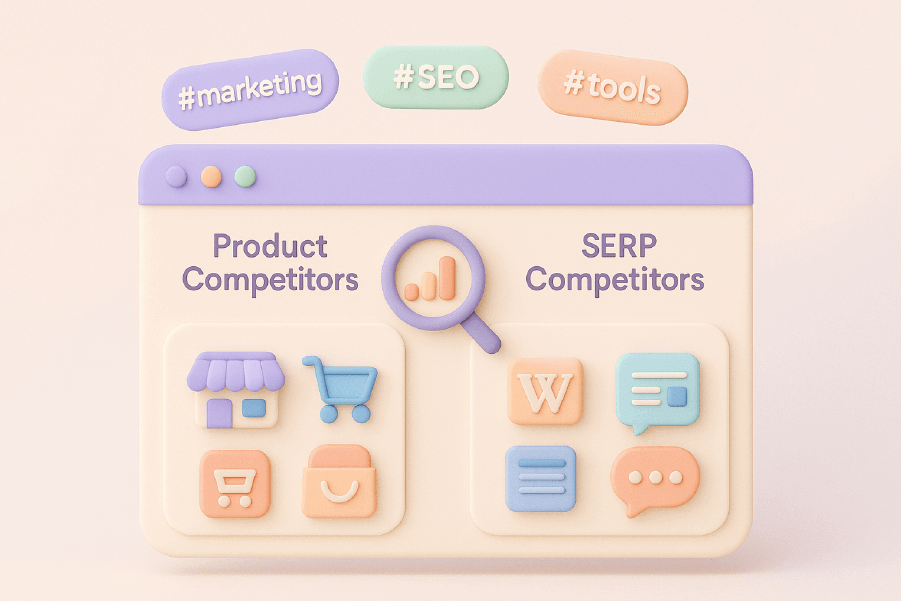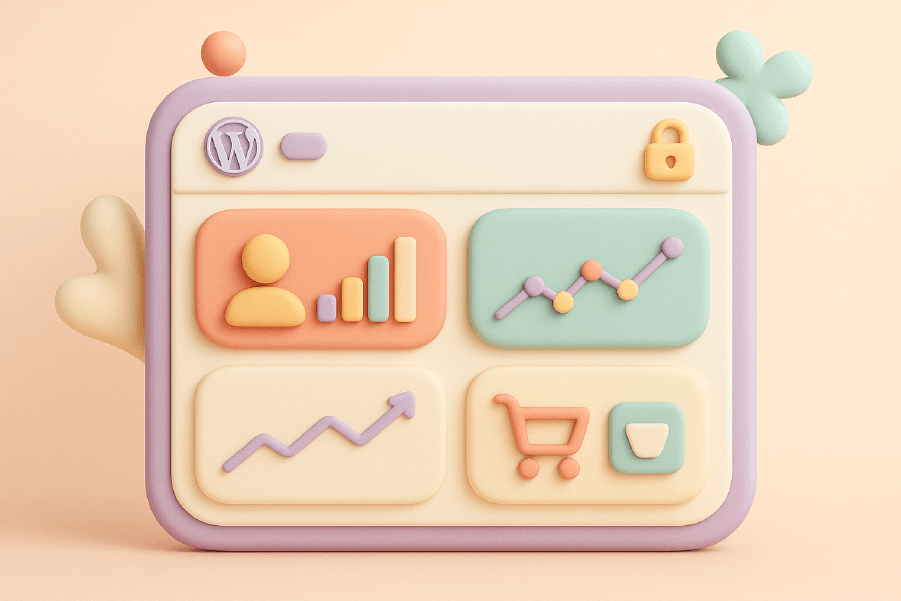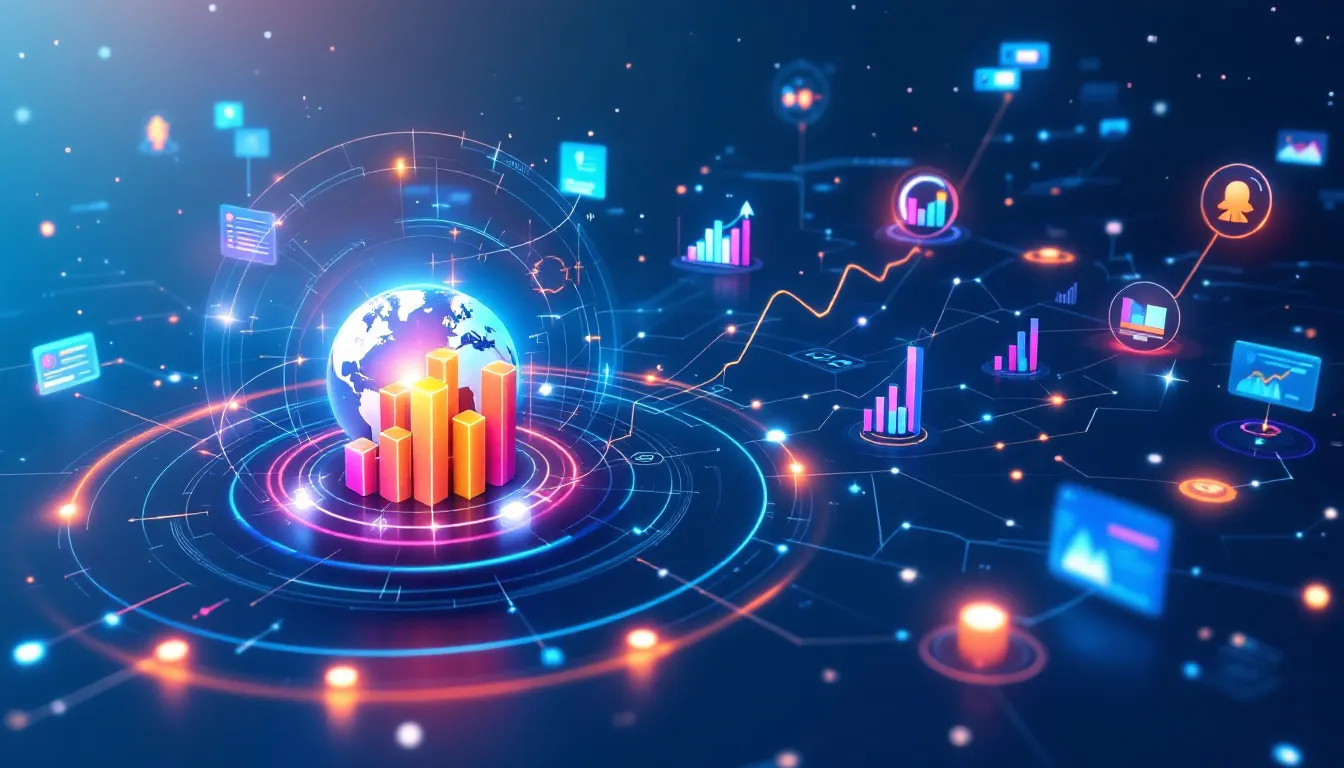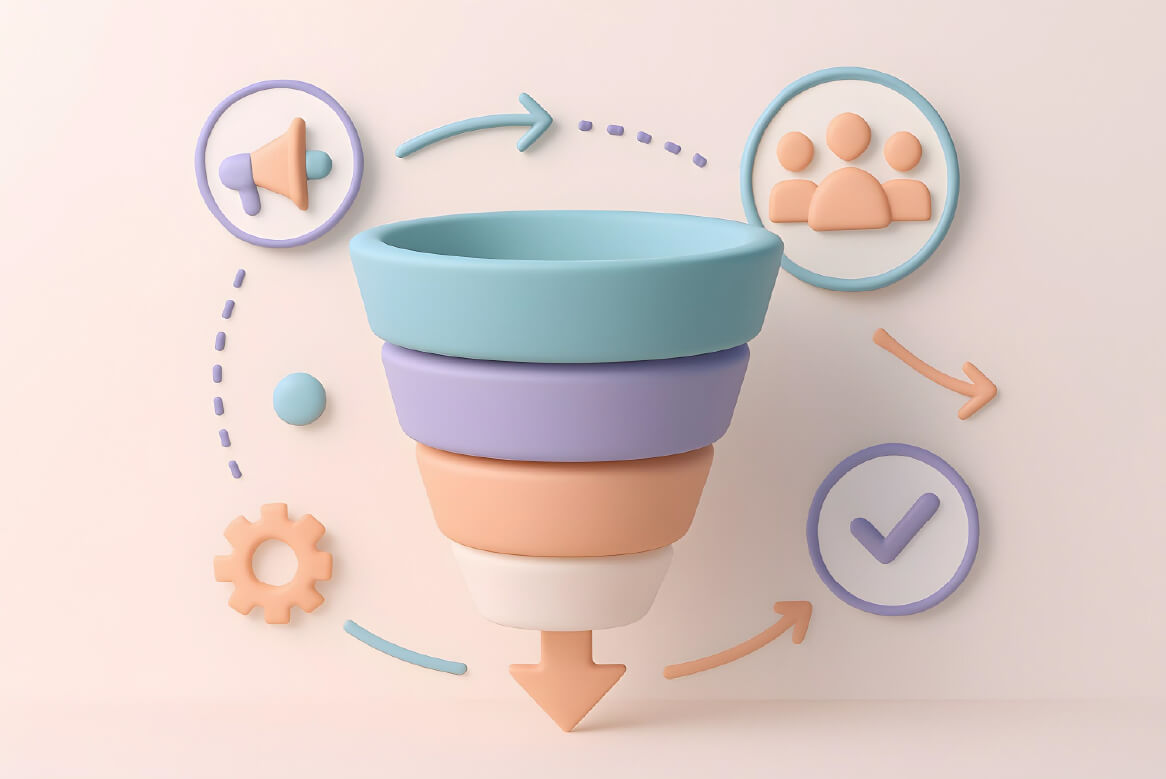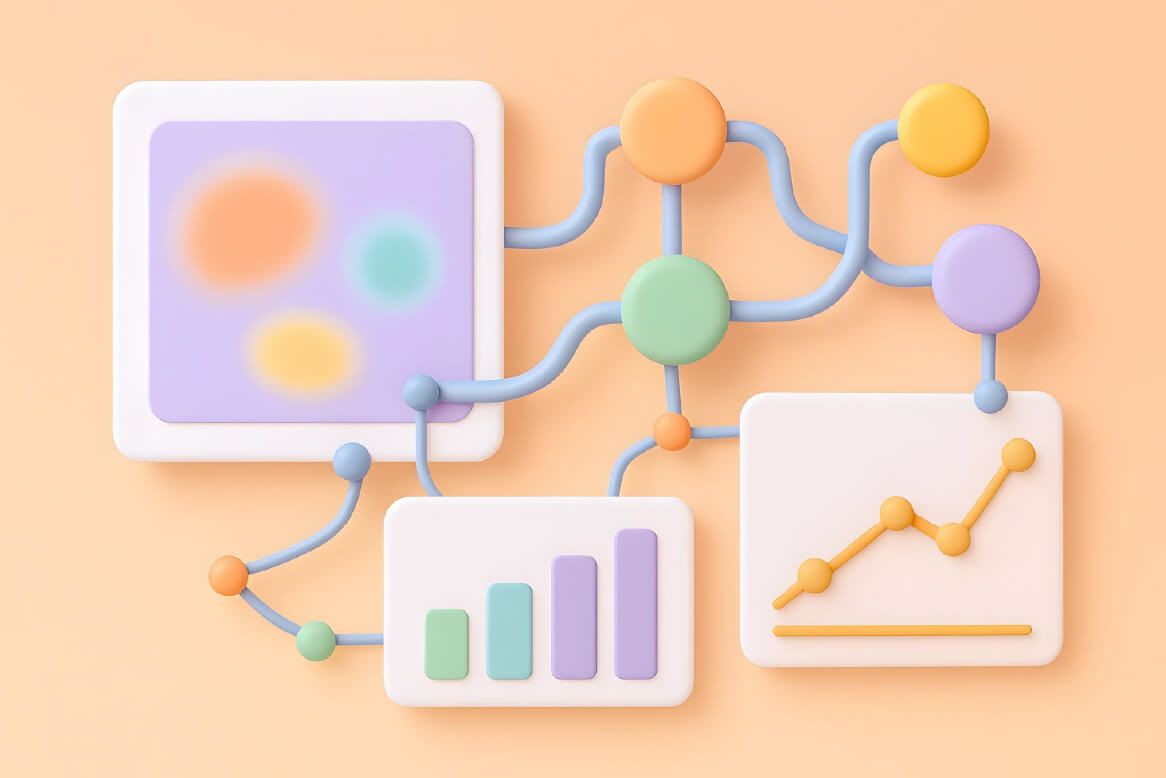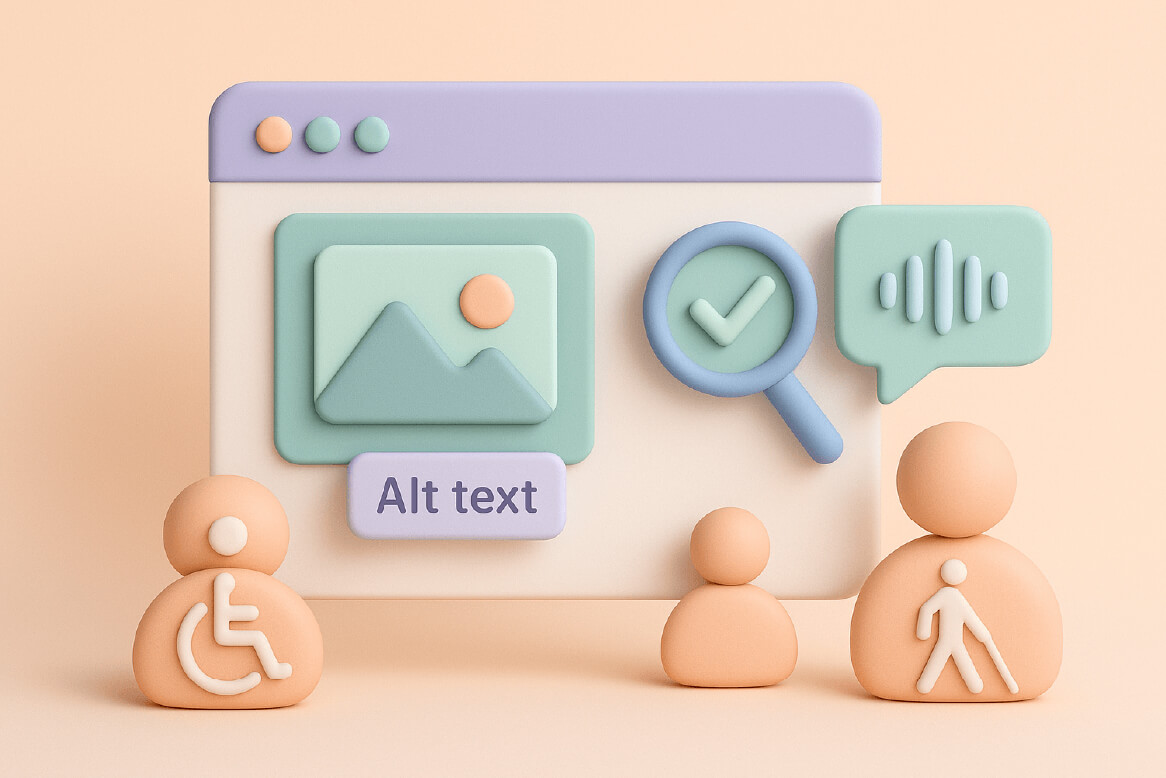Every successful business shares one critical advantage: a sales funnel that systematically converts prospects into paying customers. While many companies struggle with low conversion rates and high customer acquisition costs, industry leaders like Netflix, Amazon, and Slack have mastered the art of guiding potential customers through carefully crafted journeys that generate billions in revenue.
A well-designed sales funnel represents the entire customer journey from initial awareness to final purchase and beyond. The difference between companies that thrive and those that barely survive often comes down to how effectively they can move prospects through each stage of their marketing funnel. These sales funnel examples demonstrate proven strategies that have generated measurable results across different industries and business models.
Industry leaders determine benchmarks for success early on, using metrics such as channel performance and customer lifetime value to evaluate and optimize the effectiveness of their sales funnels.
Key Takeaways
- Proven sales funnel examples from billion-dollar companies like Netflix, Amazon, and Slack
- Each funnel demonstrates specific strategies: freemium models, free trials, and content marketing
- SaaS funnels focus on product-led growth while ecommerce emphasizes personalization
- Key success factors include clear value propositions, social proof, and friction reduction
- Metrics to track: conversion rates, customer acquisition cost, and lifetime value
What Makes a Sales Funnel Effective
Effective sales funnels share several fundamental characteristics that distinguish them from average marketing efforts. The sales funnel begins with a clear understanding of the target audience and their specific pain points, then systematically addresses these concerns through tailored messaging and strategic touchpoints.
The most successful funnels demonstrate a clear progression from awareness to purchase decision, incorporating multiple touchpoints across different marketing channels. Each stage serves a specific purpose in moving potential customers closer to becoming paying customers, with personalized messaging that resonates with their current mindset and needs. Effective funnels also provide answers to customer questions at each stage, helping guide prospects through the decision-making process.
Key components that drive funnel effectiveness include:
- Strong value propositions that immediately communicate benefits
- Multiple touchpoints across email, content, social media, and paid advertising
- Personalized messaging for each funnel stage and customer segment
- Clear calls-to-action with minimal friction points
- Integration of social proof through customer testimonials and case studies
- Risk reversal strategies like free trials or money-back guarantees
The best marketing funnels also incorporate continuous optimization based on data analysis. Companies that achieve maximum conversions regularly test different elements, analyze user behavior, and refine their approach based on what drives the highest conversion rates. Gathering customer feedback through surveys, session replays, and direct interactions is essential to inform these improvements.
By focusing on these strategies, businesses can significantly boost conversion rates and overall funnel performance.

SaaS Sales Funnel Examples
SaaS companies have pioneered many of the most effective digital marketing funnel strategies, focusing on subscription models and product trials that reduce barriers to entry. These sales funnels typically emphasize product-led growth, where the software itself becomes the primary marketing tool through features that encourage viral adoption and natural upgrade paths.
The subscription nature of SaaS businesses requires funnels that not only acquire new customers but also maximize customer lifetime value through retention and expansion revenue. Successful SaaS companies create seamless user journeys that demonstrate value quickly while building habits that lead to long-term usage. Often, a valuable piece of content—such as an ebook, whitepaper, or checklist—serves as a lead magnet to attract and nurture prospects in the SaaS sales funnel.
Netflix: Subscription-Based Growth Model
Netflix has built one of the most recognizable subscription funnels, serving ~302 million paid members and generating $39.0 billion in revenue in 2024. Their marketing funnel exemplifies how to reduce customer risk while defaulting to higher-value options.
The Netflix sales funnel begins with brand awareness through content marketing and paid ads, then converts visitors through a 30-day free trial with a cancel-anytime policy. The free trial offer is clearly shown to users on the landing page, ensuring prospects immediately see the value proposition. This risk reversal strategy eliminates the primary barrier to trial signup while building confidence in the service quality.
Key elements of their conversion strategy include:
- Premium plan defaults with clear downgrade options
- Multiple payment methods to reduce checkout friction
- Transparent communication with no hidden fees
- Call-to-action tells prospects about the 30-day free trial in a clear and transparent way
- Strong brand recognition that creates instant credibility
- Continuous A/B testing of landing pages and trial flows
Netflix’s approach demonstrates how established brand trust can support higher-priced default options while still providing flexibility for price-sensitive customers.
Slack: Freemium Team Collaboration Funnel
Slack’s viral adoption model has captured 80% of Fortune 500 companies while generating $5.9 billion in revenue. Their freemium funnel creates a natural pathway from individual users to enterprise-wide adoption through bottom-up organizational spread.
The Slack sales funnel leverages team-based invitation systems that create organic growth loops. When one team member invites colleagues, the platform’s value increases for all participants, creating a network effect that drives adoption without traditional marketing campaigns. Slack also demonstrates its ability to address team communication needs and deliver measurable results, which persuades prospects to upgrade.
Their funnel success factors include:
- Valuable free tier that hooks users with essential features
- Team invitation systems that drive viral growth
- Natural upgrade notifications when usage limits are reached
- Multiple entry points through referrals and integrations
- Seamless onboarding that demonstrates value immediately
This approach shows how product-led growth can create self-sustaining acquisition engines where existing customers become the primary source of new users.
Dropbox: Viral Referral-Driven Growth
Dropbox achieved $2.5 billion in revenue through one of the most successful referral-driven funnels in tech history. Their legendary referral program rewards both the referrer and referee with additional storage space, creating a win-win scenario that drove explosive growth. New users are referred by existing customers, which drives growth by leveraging personal recommendations and trust.
The viral component of their marketing funnel saw sign-ups increase by 60%, with the referral program driving up to 3900% growth during peak periods. This demonstrates how incentivized sharing can transform satisfied customers into active brand advocates who generate qualified leads.
Key elements include:
- Mutual benefit referrals with free storage rewards
- Simple UI and onboarding that reduces adoption friction
- Natural progression from personal to business use cases
- Continuous optimization based on user behavior data
- Product value demonstration through immediate utility
Dropbox proves that the right incentive structure can turn customer acquisition into a largely automated process driven by user satisfaction.
Mailchimp: Email Marketing Platform
Mailchimp dominates with 67.54% market share and achieved an $800 million acquisition by Intuit through strategic funnel evolution. They successfully transitioned from a freemium model to time-limited free trials, optimizing for higher paid conversion rates.
Their current sales funnel emphasizes business identity and growth aspirations rather than just email functionality. This positioning attracts small business owners who view email marketing as part of their professional development rather than just a technical tool.
Strategic funnel components:
- Interactive pricing calculator based on subscriber count
- Aspirational branding focused on business success
- Social proof highlighting millions of users
- Educational content marketing that builds authority
- Clear upgrade paths based on business growth
This evolution shows how SaaS companies can optimize their funnel model based on customer data and changing market conditions.
Ecommerce Sales Funnel Examples
Ecommerce sales funnels focus heavily on personalization and conversion rate optimization, recognizing that online shopping behavior requires different persuasion techniques than subscription software. These funnels excel at reducing purchase friction while maximizing average order value through strategic upsells and cross-sells. Ecommerce funnels are specifically structured to sell products by guiding potential customers through each stage of the journey, converting their interest into actual purchases.
The best ecommerce marketing funnels create seamless experiences from product discovery through post-purchase follow-up, often incorporating recommendation engines and loyalty programs that encourage repeat purchases. Success in ecommerce requires mastering both new customer acquisition and existing customer retention.
Amazon: Global Marketplace Dominance
Amazon’s $159 billion Q3 revenue with over 310 million active users represents the pinnacle of ecommerce funnel optimization. Their entire platform functions as a sophisticated sales funnel that personalizes every touchpoint based on user behavior and purchase history.
The Amazon sales funnel excels at reducing purchase friction through features like one-click buying while simultaneously increasing order values through AI-powered recommendations. Approximately 35% of Amazon’s sales come from their recommendation algorithms, demonstrating the power of personalized cross-selling.
Core funnel elements:
- Personalized homepage recommendations for each visitor
- One-click “Buy Now” button that eliminates checkout friction
- Optimized checkout page featuring trust elements, a simple process, and clear value propositions to reduce friction and encourage conversions
- Transparent customer reviews that build purchase confidence
- Sophisticated recommendation engine driving additional sales
- Prime membership benefits that increase customer loyalty
Amazon’s success shows how technology can create highly personalized shopping experiences that feel tailored to individual needs while operating at massive scale.
Service-Based Sales Funnel Examples
Service-based businesses require different funnel strategies that emphasize relationship building and expertise demonstration rather than product trials. Effective service-based funnels focus on identifying and solving the client’s core problem at each stage, ensuring that potential customers see how their specific issues will be addressed. These marketing funnels typically use educational content and lower-priced offerings to build trust before presenting high-ticket services.
The most effective service funnels create clear progression paths from free content to paid consultations to ongoing retainer relationships. Success depends on establishing authority and demonstrating results through case studies and customer stories.
Tony Robbins: High-Ticket Coaching Funnel
Tony Robbins has built a global coaching empire through a carefully orchestrated funnel that progresses from free content to programs costing $1,000 or more. His approach demonstrates how personal authority and consistent value delivery can support premium pricing in the coaching industry.
The funnel begins with free webinars and educational content that provide immediate value while showcasing Tony’s expertise. This builds trust and credibility before introducing progressively higher-priced offerings that culminate in exclusive mastermind programs.
Funnel progression:
- Free webinars and videos that provide actionable strategies
- Low-priced books and audio programs that serve as tripwires
- Mid-tier workshops and online courses for deeper engagement
- High-ticket coaching programs and exclusive masterminds
- Word-of-mouth referrals from transformation stories, as satisfied clients often recommend Tony Robbins’ programs to others, further expanding his reach
This model shows how authority-based businesses can create sustainable funnels that support premium pricing through demonstrated expertise and results.
Growbo: Productized Marketing Services
Growbo achieved seven-figure revenue by productizing marketing services through an unlimited requests model. Their $7 one-week trial removes barriers to testing their service while demonstrating their capability to deliver results quickly.
The transparency in their packaging and pricing builds trust with potential customers who are often skeptical of marketing agencies. By eliminating long-term contracts and providing clear deliverables, they reduce the perceived risk of working with a marketing service provider.
Key differentiators:
- Ultra-low trial price that encourages testing
- Unlimited requests model that simplifies service delivery
- Transparent pricing with no hidden fees or contracts
- No long-term commitments that reduce customer risk
- Clear package descriptions that set proper expectations
Growbo’s success illustrates how service businesses can scale by creating productized offerings that reduce complexity for both the provider and customer.
Key Success Factors Across All Funnel Types
Analyzing these diverse sales funnel examples reveals common elements that drive superior conversion rates regardless of industry or business model. The most effective sales funnels share specific characteristics that address fundamental human psychology around risk, social proof, and value perception. By analyzing these factors, businesses can form a complete picture of their sales funnel performance, identifying slow spots and opportunities for improvement.
Understanding these universal principles allows businesses to adapt proven strategies to their own unique circumstances while avoiding common pitfalls that reduce conversion rates. The following factors appear consistently across high-performing funnels in every category.
Risk Reversal Strategies
Every successful funnel incorporates some form of risk reversal that removes barriers to initial engagement. Free trials without credit card requirements, money-back guarantees, and freemium models all serve to reduce the perceived downside of trying a new product or service.
Netflix’s cancel-anytime policy and Basecamp’s no-credit-card trial demonstrate how removing even small friction points can significantly impact conversion rates. The psychology behind risk reversal recognizes that prospects often focus more on potential losses than potential gains when making decisions.
Effective risk reversal techniques include:
- Free trials with varying credit card requirements
- Money-back guarantees with clear refund processes
- Freemium tiers that provide genuine value
- Cancel-anytime policies that build confidence
- Transparent terms that eliminate hidden surprises
These strategies work because they shift the decision from “Should I risk this?” to “What do I have to lose by trying?” Implementing risk reversal strategies is worth the effort due to their significant impact on conversion rates.
Social Proof Implementation
Social proof appears prominently in every high-converting funnel, whether through customer logos, user counts, revenue figures, or detailed testimonials. Slack’s “80% of Fortune 500” claim and Netflix’s massive subscriber numbers serve as powerful credibility indicators that reduce purchase hesitation.
The most effective social proof is specific and relevant to the target audience. B2B services showcase recognizable company logos, while consumer products emphasize user reviews and ratings. The key is matching the type of social proof to what matters most to potential customers.
Strategic social proof elements:
- Customer logos from recognizable brands
- Specific user counts and growth metrics
- Revenue figures that demonstrate business success
- Detailed case studies showing real results
- Industry awards and expert endorsements
Social proof works by leveraging our natural tendency to follow the actions of others, especially those we perceive as similar to ourselves or more successful.
Friction Reduction Techniques
High-converting funnels eliminate unnecessary obstacles in the customer journey while maintaining enough qualification to ensure lead quality. Amazon’s one-click purchasing and Slack’s invitation-based onboarding show how reducing steps can dramatically improve conversion rates.
The art of friction reduction involves identifying which steps are truly necessary versus those that exist out of habit or overcaution. Sometimes adding slight friction (like email verification) can actually improve overall funnel performance by increasing lead quality.
Common friction reduction methods:
- One-click purchasing and simplified checkout processes
- Progressive profiling that collects information gradually
- Multiple payment options to accommodate preferences
- Guest checkout options for one-time purchases
- Auto-fill and saved information for returning customers
The goal is creating the smoothest possible path for qualified prospects while maintaining necessary safeguards against fraud and poor-fit customers. Reducing friction is essential for keeping users engaged and moving smoothly through the funnel.
How to Measure Sales Funnel Performance
Effective measurement and optimization separate successful funnels from those that plateau after initial setup. The most important metrics focus on both conversion efficiency and long-term customer value, providing insights that guide strategic improvements rather than just tracking vanity metrics.
Understanding which metrics matter most for your business model enables data-driven optimization decisions that compound over time. The companies featured in these sales funnel examples all demonstrate sophisticated measurement approaches that inform continuous improvement efforts.
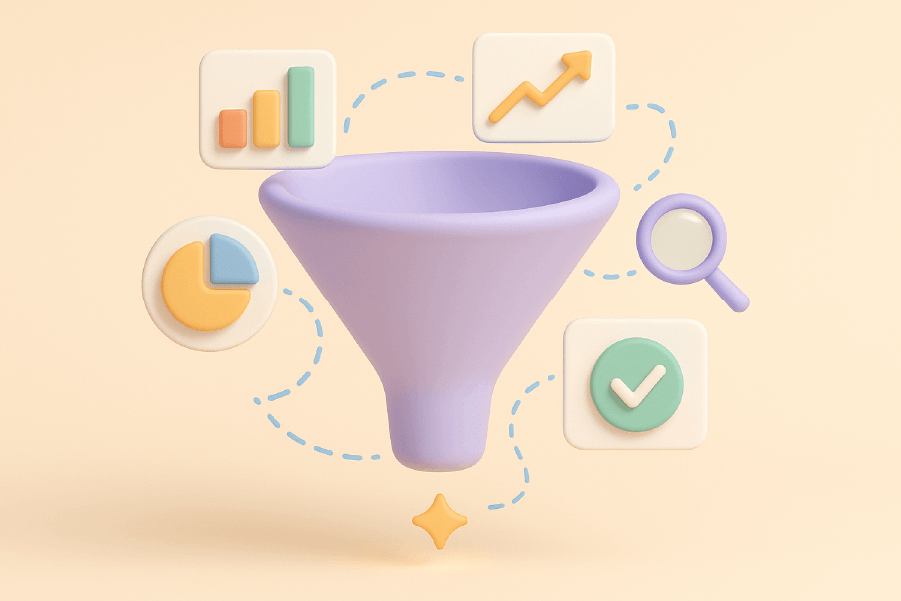
Essential Conversion Metrics
Conversion rate optimization starts with tracking the right metrics at each stage of the sales process. Beyond overall conversion rates, successful companies monitor stage-specific metrics that reveal where prospects are dropping out and why. Funnel performance is often expressed through key metrics such as conversion rate, customer acquisition cost (CAC), and customer lifetime value (LTV).
Customer acquisition cost (CAC) and customer lifetime value (LTV) provide crucial context for evaluating funnel performance. A funnel that converts at 10% but costs $500 per customer might be less valuable than one that converts at 5% but costs only $50 per customer, depending on the LTV ratio.
Critical metrics to monitor:
- Stage-specific conversion rates from awareness to purchase
- Customer acquisition cost across different channels
- Customer lifetime value and repeat purchase rates
- Sales cycle length and velocity improvements
- LTV to CAC ratios for sustainable growth assessment
These metrics provide the foundation for making informed optimization decisions rather than guessing about what changes might improve performance.
Advanced Analytics and Optimization
The most sophisticated funnels employ advanced analytics techniques that reveal deeper insights about customer behavior and preferences. While traditional marketing funnels are often viewed as linear, moving step-by-step from awareness to conversion, real customer journeys can be much more complex and nonlinear, with users entering and exiting at various points. Cohort analysis shows how customer value evolves over time, while attribution modeling helps understand which touchpoints contribute most to conversions.
A/B testing remains the gold standard for optimization, but successful companies test systematically rather than randomly. They prioritize tests based on potential impact and statistical significance requirements, ensuring that changes actually improve performance rather than just creating noise.
Advanced optimization approaches:
- Funnel visualization tools for identifying drop-off points
- A/B testing protocols for systematic improvement
- Cohort analysis for understanding retention patterns
- Attribution modeling for multi-touch journey analysis
- Predictive analytics for identifying high-value prospects
These techniques enable continuous improvement based on actual user behavior rather than assumptions about what should work.
Implementation Tips for Your Sales Funnel
Creating an effective sales funnel requires understanding your specific business context while adapting proven strategies from successful examples. The key is starting with a solid foundation based on tested principles, then optimizing based on your unique audience and market conditions. Businesses can further enhance their funnels by providing more value at each stage, which helps improve engagement and conversions.
Most businesses benefit from beginning with simpler funnel structures and adding complexity gradually as they gather data and understand customer behavior patterns. The companies in these examples didn’t start with their current sophisticated systems—they evolved through iterative improvement over time.
Choosing the Right Funnel Model
Your funnel model should align with your business fundamentals: customer lifetime value, sales cycle length, and available resources for customer acquisition. Businesses should ideally select a funnel model that aligns with their customer journey and available resources. SaaS companies with high LTV can afford longer, more complex funnels, while ecommerce businesses often need faster conversion paths.
Consider your target audience’s buying behavior and preferences when selecting strategies. B2B buyers typically require more education and social proof, while consumer purchases might prioritize convenience and emotional triggers.
Selection criteria:
- Match complexity to customer value and available resources
- Consider your sales cycle length and customer decision process
- Evaluate your team’s capabilities for ongoing optimization
- Start simple and add sophistication based on data
- Align with customer expectations in your industry
The goal is choosing an approach that you can execute well rather than copying complex systems that require resources you don’t have.
Common Funnel Optimization Mistakes
Many businesses create overly complex funnels early on, thinking that more steps will improve qualification when they actually just increase drop-off rates. The most successful sales funnels balance simplicity with effectiveness, adding complexity only when data supports the need.
Mobile optimization often gets overlooked despite increasing mobile traffic across all industries. Amazon and Netflix both prioritize mobile experience because they recognize that friction on mobile devices disproportionately impacts conversion rates.
Frequent optimization mistakes:
- Overcomplicating initial funnel design before understanding user behavior
- Neglecting mobile optimization and page loading speed
- Insufficient testing of key funnel elements and assumptions
- Ignoring post-purchase experience and retention opportunities
- Making changes without statistical significance or clear hypotheses
Avoiding these mistakes requires discipline to start simple, test systematically, and prioritize changes based on potential impact rather than personal preferences.
FAQ
What makes a sales funnel convert well?
High-converting sales funnels combine clear value propositions with minimal friction and strong risk reversal strategies. The most effective funnels also incorporate prominent social proof and personalized messaging that addresses specific customer pain points at each stage. Continuous optimization based on real user data rather than assumptions drives long-term success.
How long does it take to build an effective sales funnel?
Most businesses can create a basic, functional sales funnel within 2-4 weeks, but reaching peak effectiveness typically requires 6-12 months of data-driven optimization. The companies featured in these examples continuously refine their funnels based on performance data, treating optimization as an ongoing process rather than a one-time setup.
What’s the difference between B2B and B2C sales funnels?
B2B funnels tend to be longer and more complex, focusing on relationship building and education to support higher-value purchases with multiple decision makers. B2C funnels are typically shorter and more transactional, emphasizing convenience and emotional triggers to drive immediate purchases. SaaS companies often blend both approaches depending on their customer segments.
Which sales funnel model works best for startups?
Startups with limited resources often benefit from freemium models, free trials, or content-driven funnels that reduce paid advertising requirements. Product-led growth strategies like those used by Slack and Dropbox can create viral adoption without large marketing budgets. The key is choosing a model that aligns with your product value and target market behavior.
How often should you update your sales funnel?
Successful companies review their funnel performance monthly and make optimization changes based on statistical significance and business impact. Major funnel restructures might happen quarterly or annually, while smaller optimizations like headline tests can happen weekly. The frequency depends on your traffic volume and the statistical significance of your test results.
What tools are essential for building sales funnels?
Essential tools include a CRM system for lead management, analytics platforms for performance tracking, and A/B testing software for optimization. Email marketing platforms, landing page builders, and conversion tracking tools complete the basic toolkit. The specific tools matter less than having systematic processes for measurement and optimization across the entire customer journey.
Understanding Sales Funnel Stages
The sales funnel is a crucial component of any business’s marketing strategy, as it outlines the journey a customer takes from initial awareness to conversion. Understanding the different stages of the sales funnel is essential for providing a seamless and personalized experience for potential customers. By fully understanding each stage, businesses can tailor their messaging and approach to meet the needs of their audience, ultimately boosting conversion rates and driving long-term growth.
Top of the Funnel (TOFU)
The top of the funnel (TOFU) is where the customer journey begins. At this stage, new prospects are just becoming aware of your company or product, making it the ideal time to generate interest and provide value. TOFU strategies focus on attracting attention and showcasing your expertise through engaging content such as blog posts, social media updates, and videos. By providing valuable insights and information, businesses can establish themselves as thought leaders and build trust with potential customers. The objective at this stage is to capture the interest of new prospects, encourage them to learn more, and move them further down the funnel. Effective TOFU efforts not only drive growth by expanding your audience but also lay the foundation for higher conversion rates as prospects progress through the funnel.
Middle of the Funnel (MOFU)
The middle of the funnel (MOFU) is the consideration stage, where potential customers are actively evaluating different products or services to solve their specific problems. At this point, it’s essential to provide more in-depth information that helps prospects compare options and understand the unique benefits of your offerings. Businesses can leverage detailed product pages, compelling case studies, and authentic customer testimonials to address the concerns and needs of their audience. MOFU strategies often include targeted email marketing, lead nurturing campaigns, and retargeting ads to keep interested prospects engaged and moving forward. By showcasing how your products solve real problems and providing the information customers need to make informed decisions, you increase the likelihood of conversion and drive more sales from your funnel mofu efforts.
Bottom of the Funnel (BOFU)
The bottom of the funnel (BOFU) is the final and most critical stage, where potential customers are ready to make a purchase decision. At this stage, it’s vital to provide a clear, easy-to-use checkout process and offer prompt support to answer any last-minute questions or concerns. BOFU strategies may include offering free trials, demos, or consultations to give prospects a firsthand experience of your product or service. Leveraging digital marketing channels such as Facebook and LinkedIn allows you to reach your target audience with tailored offers and calls-to-action that drive more deals. Additionally, using email sequences and optimized product pages can help guide customers smoothly through the final steps of the buying process. By providing a seamless and personalized experience at the bottom of the funnel, businesses can maximize conversion rates, win more customers, and drive revenue growth.
By understanding and optimizing each stage of the sales funnel, businesses can create a tailored marketing and sales approach that provides value at every touchpoint. Whether you’re using content marketing to attract new prospects, detailed product pages to nurture interest, or digital channels to close more deals, a well-structured funnel ensures you deliver the right message at the right time—ultimately increasing your conversion rate and driving sustainable growth for your own business.
